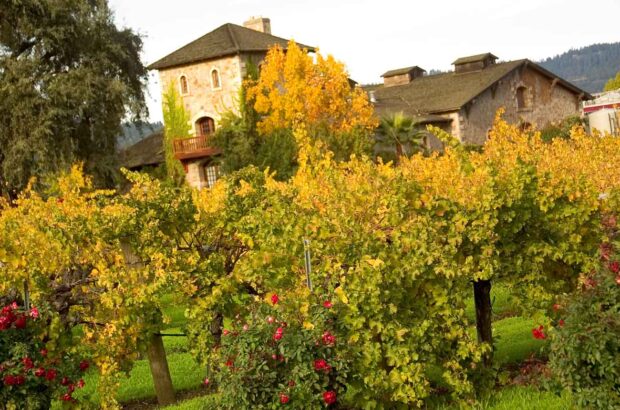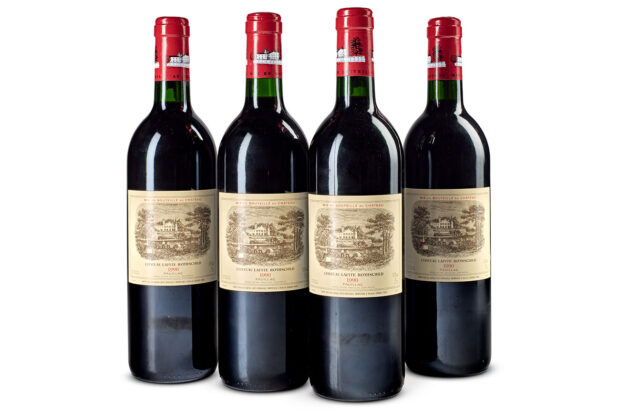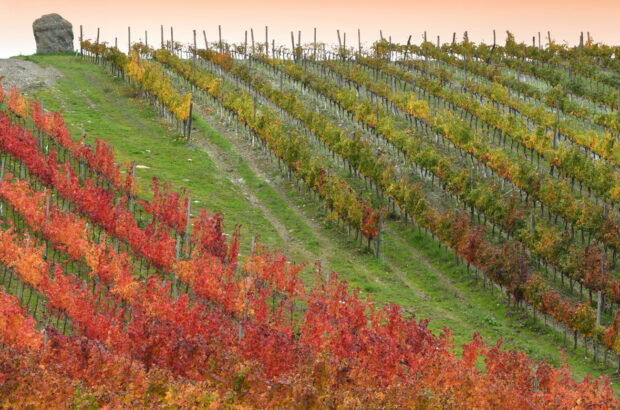What is Grignolino?
Grignolino is a wine named after the grape that is native to the Monferrato hills in the Piedmont region of Italy. Light in body and colour, with hues ranging from deep pink tourmaline to high-grade ruby, Grignolino is clean and stimulating, packing in aromas and flavours of berry, herbs and spice. Its bright acidity and freshness make it remarkably food-friendly.
It derives its name from the Piedmontese word grignolè, which means seeds. The word also refers to a grimacing expression, which would likely result from biting into something acidic or tannic. These are fair associations since Grignolino has remarkable tannins and carries more pips in each small berry than most other grape varieties. One can imagine that the resulting wine might cause a grimace – but more likely a smile – because Grignolino wines offer undeniable charm and energy.
‘In many ways, Grignolino is like a summertime version of Nebbiolo, with bright aromas of rose, sage, and white peppercorn but often more wild strawberry than dark, sour cherry, and is best enjoyed slightly chilled,’ says Kirk Peterson, a writer, educator and Italian wine ambassador in the US. ‘It has wonderfully crisp, crunchy acidity and a considerable amount of lip-pursing fruit tannins.’
Henry Davar, an instructor at Vinitaly International Academy, agrees. ‘Grignolino wines offer an aromatic profile not dissimilar to Nebbiolo, and have a similar sinewy structure – albeit on a smaller scale,’ he says.
History
As far back as the 13th century, Grignolino was abundant, well-received and demanded similar prices to Barolo, according to Ian D’Agata’s Native Wine Grapes of Italy (though in this time, these were not official Barolo DOCG wines, but the wines made in the area.)
The attraction was its pale translucent hue and light mouthfeel which set the wine apart from the bigger, richer wines of the area. The wine became unfashionable in the 1970s, when sweet wines grew in popularity.
All the while, neighbouring grapes of the region, such as Nebbiolo and Barbera, started to take centre stage throughout the world. As a result, Grignolino was at risk of disappearing from Piedmontese viticulture.
Grignolino’s revival
Today, it is experiencing a rediscovery by fans of native vines and of fresher wine styles.
‘Grignolino is an example of the shift happening away from “big blue” in the past decade,’ says Davar. ‘The native grapes of Italy are beneficiaries of this shift, as some of our finest wines are made from grapes which express in the red fruit spectrum.’
‘Furthermore, wine drinkers are more educated to the diversity of wines,’ says Peterson. ‘They are getting over the idea that red wines have to be a behemoth to be delicious, and finally embracing more fresh, vivacious red wine styles.’
Sense of place
Primarily grown in the Alessandria and Asti provinces in Monferrato, Grignolino, like its neighbour Nebbiolo, is an excellent interpreter of its origin. Soil and site sensitivity translate to remarkable diversity. The two most popular areas that Grignolino comes from are Asti and Monferrato Casalese.
In the Grignolino d’Asti denomination, the vines grow in sandy soils which lend to lighter, more perfumed wines. The Grignolino del Monferrato Casalese denomination, located just to the north, is known to produce wines with more heft and richness due to marly clay and calcareous soils. Looking closer, the soils in this area are light in colour – almost white.
The Langhe has historically been an excellent place to make Grignolino, and although rare today the wines are worth exploring.
Food-friendly
A versatile wine, Grignolino works well with many regional dishes of Piedmont, such as steak tartare and poached rabbit.
‘On the international table, it makes a wonderful match for duck, lighter pork dishes, and all manner of charcuterie,’ says Peterson.
Producers to try include: Gaudio, Braida, Montalberra, Incisa della Rocchetta, Bersano, Cavallotto, Poderi Cellario







